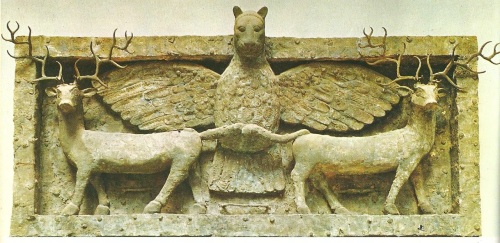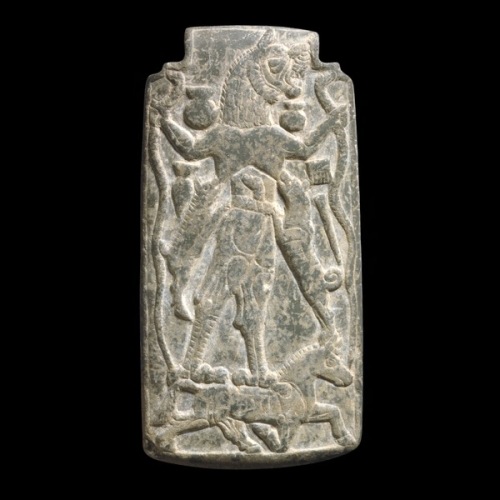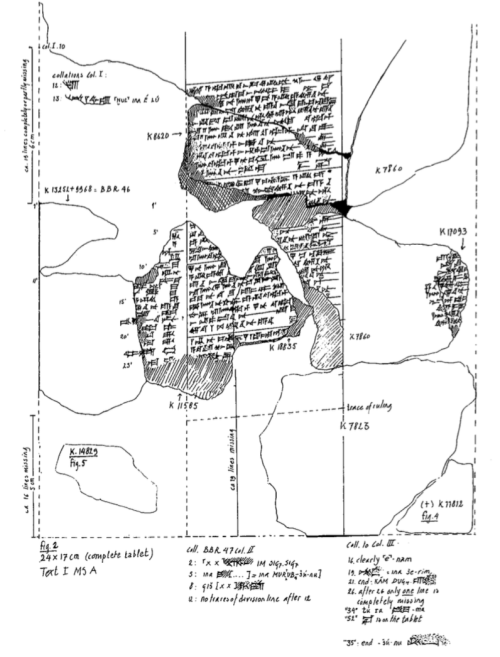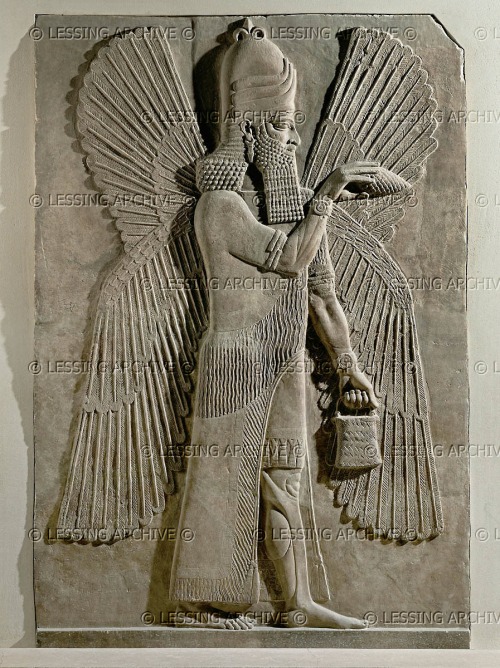Eco: The Kircherian Ideology
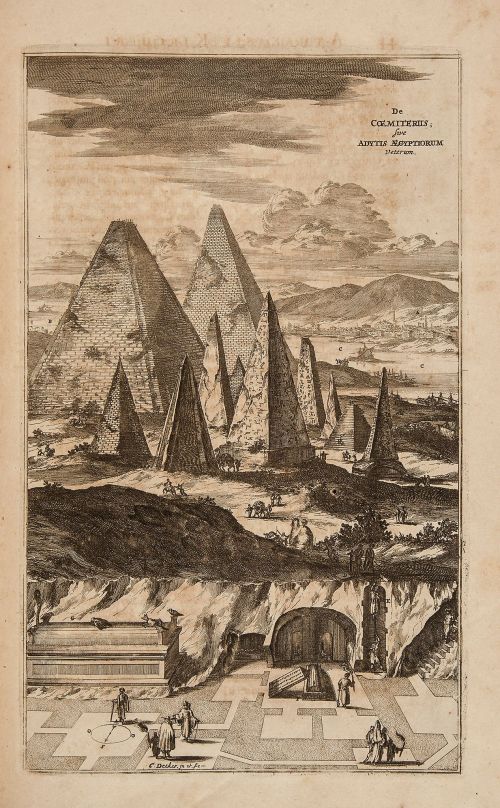
Athanasius Kircher (1602-80), Egyptian pyramids by Gioseffo Petrucci, Prodromo apologetico alli studi chiercheriani, Amsterdam, 1677, reprinted from Sphinx Mystagoga, a selection of images related to Athanasius Kircher in the Stanford University Archives, curated by Michael John Gorman, 2001. This work is in the public domain in its country of origin and other countries and areas where the copyright term is the author’s life plus 100 years or less.
“It would be idle to hold Kircher responsible for his inability to understand the nature of hieroglyphic writing, for which in his time nobody had the key. Yet his ideology magnified his errors.
“Nothing can explain the duplicity of the research of Kircher better than the engraving which opens the Obeliscus Pamphilius: in this cohabit both the illuminated image of Philomatià to whom Hermes explains every mystery and the disquieting gesture of Harpocrates who turns away the profane, hidden by the shadow of the cartouche.” (Rivosecchi 1982: 57).
The hieroglyphic configurations had become a sort of machine for the inducing of hallucinations which then could be interpreted in any possible way.
Rivosecchi (1982: 52) suggests that Kircher exploited this very possibility in order to discuss freely a large number of potentially dangerous themes–from astrology to alchemy and magic–disguising his own opinions as those of an immemorial tradition, one in which, moreover, Kircher treated prefigurations of Christianity.
In the midst of this hermeneutic bulimia, however, there glimmers the exquisitely baroque temperament of Kircher at play, delighting in his taste for the great theater of mirrors and lights, for the surprising museographic collection (and one has only to think of that extraordinary Wunderkammer which was the museum of the Jesuit Collegio Romano).
Only his sensitivity to the incredible and the monstrous can explain the dedication to the Emperor Ferdinand III that opens the third volume of Oedipus:
“I unfold before your eyes, O Most Sacred Caesar, the polymorphous reign of Morpheus Hieroglyphicus. I tell of a theater in which an immense variety of monsters are disposed, and not the nude monsters of nature, but adorned by the enigmatic Chimeras of the most ancient of wisdoms so that here I trust sagacious wits will draw out immeasurable treasures for the sciences as well as no small advantage for letters.
Here there is the Dog of Bubasti, the Lion Saiticus, the Goat Mendesius, here there is the Crocodile, horrible in the yawning of its jaws, yet from whose uncovered gullet there emerges the occult meanings of divinity, of nature, and of the spirit of Ancient Wisdom espied through the vaporous play of images.
Here there are the Dipsodes thirsting for blood, the virulent Asp, the astute Icneumon, the cruel Hippopotami, the monstrous Dragons, the toad of swollen belly, the snail of twisted shell, the hairy caterpillar and the innumerable other specters which all show the admirably ordered chain which extends itself into the depths of nature’s sanctuaries.
Here is presented a thousand species of exotic things in many and varied images, transformed by metamorphosis, converted into human figures, and restored once more to themselves again in a dance of the human and the savage intertwined, and all in accordance with the artifices of the divine; and finally, there appears the divinity itself which, to say with Porphyry, scours the entire universe, ordering it with all things in a monstrous connubium; where now, sublime in its variegated face, it raises its canine cervix to reveal itself as Cenocephalus, now as the wicked Ibis, now as the Sparrow-hawk wrapped in a beaky mask.
[ . . . ] now, delighting in its virgin aspect, under the shell of the Scarab it lies concealed as the sting of the Scorpion [these descriptions carry on for four more pages] in this pantomorphic theater of nature unfolded before our gaze, under the allegorical veil of occult meanings.”
This is the same spirit which informed the medieval taste for encyclopedias and for libri monstruorum, a genre which reappears from the Renaissance onwards under the “scientific” guise of the medical studies of Ambroise Paré, the naturalist works of Ulisse Aldrovandi, the collection of monsters of Fortunio Liceti, the Physica curiosa of Gaspar Schott.
Here it is combined, with a quality of frenzied dissymmetry that is almost Borrominian, recalling the aesthetic ideals presiding over the construction of the hydraulic grottos and mythological rocailles in the gardens of the period.
Beyond this, however, Rivosecchi has put his finger on another facet of the Kircherian ideology. In a universe placed under the sign of an ancient and powerful solar deity, the myth of Osiris had become an allegory of the troubled search for stability in the world still emerging from the aftermath of the Thirty Years War, in which Kircher was directly involved.
In this sense, we might read the dedications to Ferdinand III, which stand out at the beginning of each volume of the Oedipus, in the same light as the appeals of Postel to the French monarchy to restore harmony a century before, or as the analogous appeals of Bruno, or as Campanella’s celebration of a solar monarchy, prelude to the reign of Louis XIV, or as the calls for a golden century which we will discuss in the chapter on the Rosicrucians.
Like all the utopian visionaries of his age, the Jesuit Kircher dreamed of the recomposition of a lacerated Europe under a stable monarchy. As a good German, moreover, he repeated the gesture of Dante and turned to the Germanic, Holy Roman emperor.
Once again, as in the case of Lull, though in ways so different as to void the analogy, it was the search for a perfect language that became the instrument whereby a new harmony, not only in Europe, but across the entire planet, was to be established.
The knowledge of exotic languages, aimed not so much at recovering their original perfection, but rather at showing to the Jesuit missionaries “the method of bearing the doctrine of Christ to those cut off from it by diabolic malice” (preface to China, but also Oedipus, I, I, 396-8).
In the last of Kircher’s works, the Turris Babel, the story of the confusion of tongues is once again evoked, this time in an attempt to compose “a grandiose universal history, embracing all diversities, in a unified project of assimilation to Christian doctrine. [ . . . ]
The peoples of all the world, dispersed after the confusion, are to be called back together from the Tower of the Jesuits for a new linguistic and ideological reunification.” (Scolari 1983: 6).
In fact, hungry for mystery and fascinated by exotic languages though he was, Kircher felt no real need to discover a perfect language to reunite the world in harmony; his own Latin, spoken with the clear accents of the Counter-Reformation, seemed a vehicle perfectly adequate to transport as much gospel truth as was required in order to bring the various peoples together.
Kircher never entertained the thought that any of the languages he considered, not even the sacred languages of hieroglyphics and kabbalistic permutations, should ever again be spoken. He found in the ruins of these antique and venerated languages a garden of private delight; but he never conceived of them as living anew.
At most he toyed with the idea of preserving these languages as sacred emblems, accessible only to the elect, and in order to show their fecund impenetrability he needed elephantine commentaries.
In every one of his books, he showed himself as a baroque scholar in a baroque world; he troubled more over the execution of his tables of illustrations than over the writing (which is often wooden and repetitive).
Kircher was, in fact, incapable of thinking other than in images (cf. Rivosecchi 1982: 114). Perhaps his most lasting achievement, and certainly his most popular book, was the Ars magna lucis et umbrae of 1646.
Here he explored the visible in all its nooks and crannies, drawing from his exploration a series of scientifically valid intuitions which even faintly anticipate the invention of the techniques of photography and the cinema.”
Umberto Eco, The Search for the Perfect Language, translated by James Fentress, Blackwell. Oxford, 1995, pp. 162-5.



